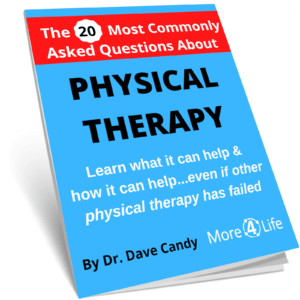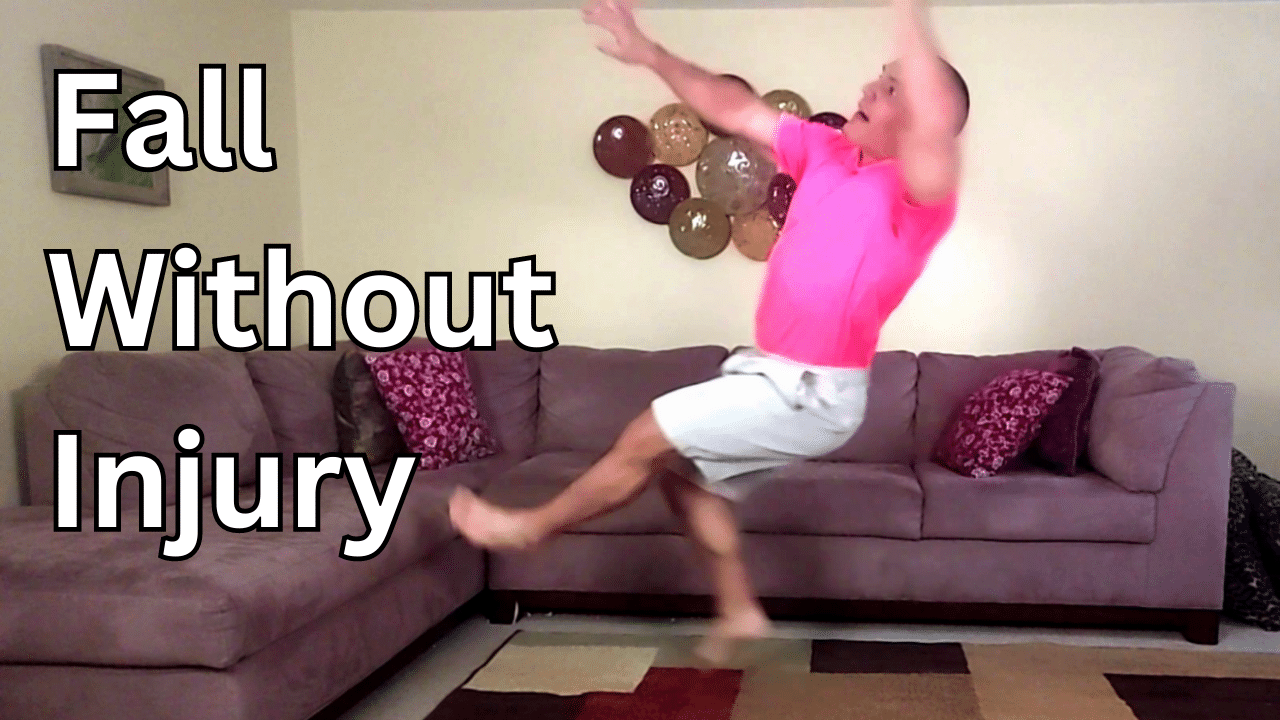How Can Seniors Fall Safely Without Injury?
There's a lot of focus in the medical community on how to prevent falls in seniors. But not all falls can be prevented. Watch the video to learn how to fall safely so that you don't injury yourself in the event of a fall.

Why Learning How To Fall Safely Is Important.
Unfortunately, 1 in 4 seniors over the age of 65 falls every year.
So no matter how good your fall prevention measures are, even if you cut your risk in half, there's still a fairly good chance that you may have a fall.
Some falls are preventable, but some falls are just freak accidents.
So knowing what to do if and when you do fall will help prevent you from injuring yourself.
In this post, we'll cover four different situations:
- How To Fall Safely Forwards
- How To Fall Safely To The Side
- How To Fall Safely Backwards
- How To Fall Safely If You Slip On Ice
Before we get started on the specific strategies for those four different situations though, there are three general principles about how to fall safely that apply across all four situations.
3 Principles Of How To Fall Safely For Seniors
1. Protect your head
Don't let your head hit the ground. You can deal with bumps or bruises or even broken bones if necessary. However, if you hit your head, that could be big trouble. If you hit your head, that could result in a concussion, or even worse, a stroke.
2. Maximize Surface Area Contact When Landing From a Fall
If you go back to physics, force equals mass times acceleration, or
F = m * a
Gravity is always accelerating you down towards the center of the Earth at 9.8 meters per second.
So, the larger your body mass, the larger the impact force
So, there is some truth to this saying: "Bigger they are, the harder they fall."
There's another thing that you need to know about physics though:
Pressure = Force / Area
If you hit the ground with your full body force on a small surface area - for example, your wrist - you very well might break your wrist.
That's because you have a lot of force coming down over just a small surface area.
If you can really spread out and hit the ground with as much surface area as possible, you've got the same amount of force coming down, but it's spread over a wider surface area, so there's not as much pressure on any one single point.
3. Activate You Muscles (Slap The Ground)
The more you can activate your muscles to help absorb some of that shock, it won't hurt as badly as if you just hit the ground like a limp noodle.
In martial arts like Judo, they tell you to "slap the mat" as you're falling down because that activates your muscles.
Slapping the mat (or the ground) activates your muscles and it helps absorb that shock by slowing down the accelration of gravity so that your body doesn't hit with as much force.
Now that we've covered the basic principles, let's get into the techniques.
How To Fall Forward Safely
First, we're going to consider the situation where you're walking and you trip over something.
What you don't want is to hit your head or land on your face. That's principle #1.
You also don't want to land on your wrists because you might break something. That's principle #2
So you want to try to hit with your forearms, both forearms at the same time, and then slap the ground. That's principle #3
Watch the video above for a demonstration.
How To Fall Safely On You Side
The second situation that we're going to consider is falling to the side.
If you're walking a lose your balance to the side, you may end up falling on your side.
Your instinct is probably going to be to brace out to the side with your hand.
But again, you don't want to land on your wrist. (Principle #2)
So you want to fall on the meaty part of your arm and then slap the ground. (Principle #3)
The roll to your back and slap the ground with the other arm.
Watch the video for a demonstration
How To Fall Safely Backwards
If you trip over something and fall backwards, you want to backpedal if you can, and then sit down.
Try to turn so that you're landing on one butt cheek instead of landing straight on your tailbone.
Then roll to one side a little bit and use the same technique as your side fall.
You're going to hit on one side, slap the ground, and then roll to the other.
Watch the video for a demonstration.
How To Fall Without Injury If You Slip On Ice
One of the more common situations for falls, especially in younger people, is if you slip on ice and your feet go out from under you.
You don't really have time to take that step backwards to sit down in that case.
So you're going to be up in the air and kind of flailing and free-falling.
The best situation is to roll over to your side.
The absolute worst situation would be to land flat on your back and potentially hit your head.
You also don't want to land back on your wrists because then you might break your wrists. Or your arms might give out, and then you still might hit your head.
So if you're up in the air and falling, you want to roll your body to the side. Throw your arms and kick your leg in one direction so that you spin to the side.
Then slap the ground and roll.
Watch the video for a demonstration.
Safety Considerations
DO NOT practice these techniques at home on your own.
These are techniques that you should do under the guidance of a physical therapist in a controlled environment.
Practicing these "safe falling" techniques on your own isn't safe unless you know what you're doing.
Don't put yourself at risk for injury!
Get help from a professional.
If you live in the St. Louis area, we'd be happy to help you reduce your fall risk and/ or learn how to fall safely. Just tap the button below to request an appointment with one of our specialist physical therapists.
Here are some other posts about balance and fall prevention you might enjoy:
How To Get Up From The Floor After A Fall
3 Best Balance Exercises For Seniors To Improve Balance At Home
Spinal Stenosis and Balance Problems: 3 Ways To Improve Your Balance


